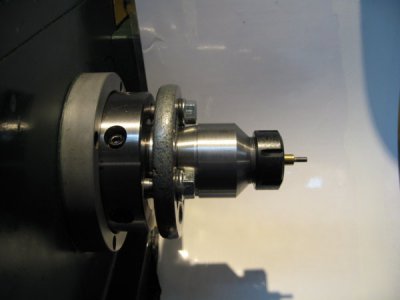However on almost all of the youtube videos and blogs that I have seen 3 jaw chucks are used all the time and collets are very rarely if ever used. Am I missing something obvious?
In some limited situations, you just don't care about how concentric the turned end of the bar is to the piece that's in the chuck. Let me explain.......
Mostly that's when you are going to cut all new features on a part. You stick a blank rod in your 3-jaw chuck (that might have say 3 thou. run-out) then if you turn the entire outer surface of the part (even at different diameters) they will all be concentric with each other. After you part it off your work piece is round and all the new features you cut are concentric to each-other and your chuck runout has not mattered! The fact that you reshaped the entire outside of the part means the part has been re-centered about a new axis. That new axis may be 3 thou. away from the axis of the bar still left in the
chuck, but it doesn't matter.
You can even drill holes in the part using a drill bit in the tail-stock and those drilled holes will be concentric to the freshly turned circumference. That's because the the work piece (and chuck) are turning about the lathe spindle axis.
Note:
-in this case you may notice that your first cut is "interrupted" that you just skim one side of the work and the other side is uncut. At this point your work piece will not be round.
-your raw stock needs to start out bigger than the final part diameter plus the offset of the new axis.
However, if you need to re-mount something in your chuck for another operation, or need to create a new feature that has to be concentric with an existing one, then you need to centre that feature that was previously turned. You might not be able to do that to the accuracy required simply due to the chuck runout.
For re-chucking a workpiece you can try to minimize that affect by putting a mark on your work piece (a punch mark, or a sharpie line) inline with jaw #1 and put the work back in the chuck in the same position.
Of course, the ideal is to have a chuck with known low runout, so you don't have to worry about re-chucking a workpiece.
Another factor is cost.....a cheap 3-jaw chuck costs less than the collet adapter and all the collets you'd need to span a much smaller range.
-brino

